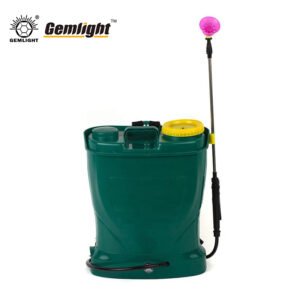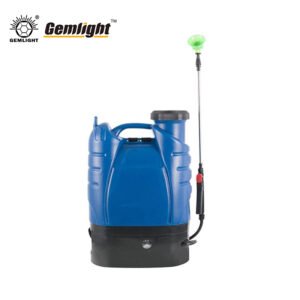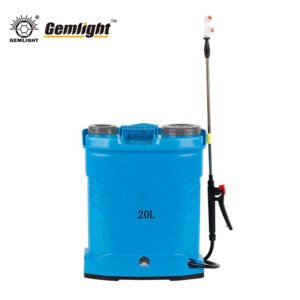1. Understanding the Benefits of a Machete for Gardening
A machete for gardening is more than a cutting tool; it’s an essential farm companion. It allows African farmers to clear dense brush, trim shrubs, and manage weeds efficiently. Using the right machete reduces labor intensity and increases productivity, particularly in tropical climates. I emphasize durability, balance, and blade sharpness, as these features determine how effectively the tool handles long hours of work. Investing in a quality machete for gardening ensures reliability, comfort, and safety while performing daily farm tasks, making it a versatile addition to any garden toolkit.
2. How to Choose the Best Machete for Africa
Choosing the best machete for gardening involves assessing blade length, weight, and material. African farmers often work in thick vegetation, so I recommend carbon steel or high-carbon stainless steel blades for strength and corrosion resistance. Consider handle ergonomics, as a comfortable grip reduces fatigue. Balance between blade and handle is key for precise control. Evaluate local conditions, crop types, and the tasks you perform daily. The best machete for gardening should combine durability, efficiency, and ease of maintenance, making farm work faster and safer.
3. Top Features to Look for in a Machete for Gardening
The most important features include blade material, sharpness, weight, and handle design. A machete for gardening must have a tough, rust-resistant blade to withstand soil and plant sap. I look for full tang construction to ensure stability and strength. Lightweight designs reduce strain during extended use, while ergonomic handles improve grip and precision. Some blades feature a slightly curved edge for chopping branches or a flat edge for slicing weeds. These features collectively enhance performance, safety, and comfort for African farmers working in gardens or small farms.

4. Comparing Different Types of Machete for Gardening
Not all machetes are created equal. Barong, Panga, and Latin-style machetes each serve specific gardening purposes. I analyze blade shapes, weight distribution, and cutting efficiency. Curved blades excel at chopping thick vegetation, while straight blades are ideal for trimming and slicing. Some machetes include serrated edges for stubborn plants. Comparing these types helps farmers select the tool that fits their environment and tasks. Understanding the differences ensures that the chosen machete for gardening provides maximum utility, minimizes effort, and withstands rigorous farm use.
5. Essential Safety Tips When Using a Machete
Safety is paramount when handling a machete for gardening. Always wear gloves and protective clothing to avoid injuries. Maintain a firm grip, and keep your body away from the swing path. I recommend sharpening the blade regularly; a sharp machete is safer than a dull one. Store tools securely and teach family members proper handling. By following these precautions, African farmers can prevent accidents, improve efficiency, and extend the lifespan of the best machete for gardening while performing daily garden or farm work.
6. Maintaining Your Best Machete for Gardening for Longevity
Proper maintenance ensures your best machete for gardening stays effective for years. I advise cleaning the blade after each use to prevent rust and sap buildup. Light oiling preserves carbon steel blades, while regular sharpening maintains cutting efficiency. Check the handle for cracks or loosening, and replace it if necessary. Proper storage in a dry, safe place prevents damage and accidents. Consistent maintenance not only extends the life of the machete but also enhances safety and performance, allowing African farmers to rely on their tool for both light garden tasks and heavy farm work.
7. Why African Farmers Prefer a Machete for Gardening
African farmers favor a machete for gardening due to its versatility and reliability. It handles clearing, pruning, and harvesting in one tool, eliminating the need for multiple implements. I observe that farmers value machetes that withstand tough conditions, including humidity, soil, and dense vegetation. Lightweight designs reduce fatigue during long working hours. A high-quality machete increases efficiency, productivity, and precision, making daily farm and garden work smoother. Its affordability and durability make it indispensable for smallholder and commercial farmers alike.
8. Best Machete for Gardening: Blade Materials and Durability
Blade material directly affects performance and lifespan. I recommend high-carbon steel for sharpness and edge retention or stainless steel for corrosion resistance. Thickness and tang construction influence durability and chopping power. African farmers require machetes that endure repeated strikes against branches, weeds, and roots. A durable blade reduces frequent replacements, saving cost over time. Selecting the best machete for gardening means balancing hardness, flexibility, and resistance to wear, ensuring the tool performs reliably under diverse farm and garden conditions.

9. Ergonomic Handles and Comfort in a Machete for Gardening
Handle design greatly affects comfort and precision. I emphasize ergonomic handles made of wood, plastic, or composite materials with non-slip grips. A comfortable handle reduces strain during extended use and allows better control for precise cuts. Some designs include finger guards to prevent accidents. African farmers who spend hours clearing vegetation benefit from a machete for gardening with a well-balanced, secure handle. Investing in a comfortable handle improves efficiency, reduces fatigue, and enhances overall safety in garden and farm work.
10. Smart Buying Guide for the Best Machete
A smart buying guide evaluates price, quality, and purpose. I advise checking blade material, tang type, and handle comfort before purchase. Consider local availability, warranty, and after-sale support. Look for reviews from other African farmers to gauge real-world performance. Decide whether you need a machete for heavy clearing, light trimming, or both. Selecting the best machete for gardening requires research and consideration of personal needs, ensuring a tool that lasts, performs efficiently, and delivers safety and comfort in daily garden and farm tasks.
| Product Name | Material | Color | Size (inches) | Specifications / Features |
|---|---|---|---|---|
| Panga Gardening Machete | High-Carbon Steel | Black | 18 | Curved blade, full tang, ergonomic wooden handle |
| Latin-Style Garden Machete | Stainless Steel | Silver | 16 | Straight blade, lightweight, anti-corrosion |
| Barong Machete for Gardening | High-Carbon Steel | Dark Grey | 15 | Leaf-shaped blade, durable, balanced for chopping |
| Bolo Gardening Machete | High-Carbon Steel | Black | 14 | Thick blade, curved edge, strong for clearing weeds |
| Panga Mini Machete | Stainless Steel | Silver/Black | 12 | Lightweight, ergonomic handle, portable for small gardens |
| Cane Knives | High-Carbon Steel | Black | 20 | Long blade, sharp tip, ideal for cutting sugarcane and shrubs |
| Parang Machete | Carbon Steel | Black/Brown | 18 | Slightly curved blade, reinforced spine, versatile use |
| Bush Machete | Stainless Steel | Grey | 17 | Serrated back, multipurpose, corrosion-resistant |
| Kukri Garden Machete | High-Carbon Steel | Black | 16 | Distinctive angled blade, heavy-duty chopping |
| Two-Handed Gardening Machete | High-Carbon Steel | Dark Grey | 22 | Extra-long blade, double-handed use, heavy vegetation |
 About us:
About us:
Dingzhou Gemlight Cutting Tools Co., Ltd.,With a solid foundation since 1990, Gemlight machete is a trusted name in the field of cane machete manufacturing. We focus on R&D, design and production to produce high quality wholesale china machete and shovel,hoe,pickaxe,sickle,farm tools.
Gemlight Machete factory Based in Baoding, Hebei, China, we benefit from efficient logistics and fast delivery. Our products have been well received in more than 50 countries, thanks to our commitment to customer satisfaction




